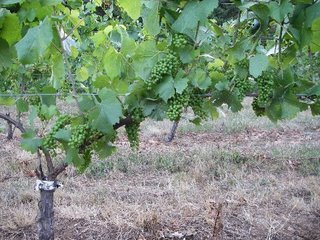Biodynamic farming:
Seufert Winery adds a biodynamic farmed vineyard to our line up in 2006. We’re excited to support sustainable agriculture and to make wine from these special grapes.
At its core, biodynamic farming seeks to increase farm self-sufficiency by reducing non-farm inputs. These non-farm inputs include such things as fertilizers, herbicides, insecticides, fungicides, etc. In this way, biodynamic farming resembles organic farming. However, biodynamic farming adds a dose of mysticism. Visit Wikipedia’s Biodynamic agriculture description to learn about the history and methods of biodynamic farming.
The Oregon Biodynamic Group describes the biodynamic farm as an organism:
Wikipedia helps make the case for wine from biodynamic vineyards:
We look forward to working with these grapes and offering this wine to our customers.
Seufert Winery adds a biodynamic farmed vineyard to our line up in 2006. We’re excited to support sustainable agriculture and to make wine from these special grapes.
At its core, biodynamic farming seeks to increase farm self-sufficiency by reducing non-farm inputs. These non-farm inputs include such things as fertilizers, herbicides, insecticides, fungicides, etc. In this way, biodynamic farming resembles organic farming. However, biodynamic farming adds a dose of mysticism. Visit Wikipedia’s Biodynamic agriculture description to learn about the history and methods of biodynamic farming.
The Oregon Biodynamic Group describes the biodynamic farm as an organism:
“Using a systems ecological approach, biodynamics sees each farm as an organism, a self-contained entity with its own individuality. Thinking about the farm as an ecosystem leads to holistic management practices. These include integrating crops with livestock, recycling nutrients, maintaining soil, enhancing the health and wellbeing of crops and animals and even the farmer too. In this sense biodynamics shares concepts with permaculture -- humans have a role as the designer of the ecosystem. “
Source: Oregon Biodynamic Group, What is Biodynamics?
Wikipedia helps make the case for wine from biodynamic vineyards:
“Many grape growers claim to have tried biodynamic methods and found immediate improvements in the health of their vineyards, specifically speaking in the areas of biodiversity, soil fertility, crop nutrition, and pest, weed, and disease management. Winemakers claim to have noted stronger, clearer, more vibrant tastes, as well as wines that remain drinkable longer. Critics say that many of these improvements would have happened if organic farming was used, without the mysticism involved in biodynamics. Nonetheless, there is an upsurge of interest among grape growers worldwide and in the media, with a number of very high-end, high-profile commercial growers also converting to biodynamic practices.”
Source: Wikipedia, biodynamic wine
We look forward to working with these grapes and offering this wine to our customers.




